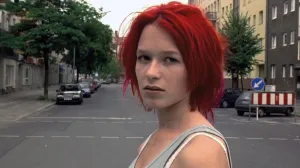Later this month, King Kong — the beloved 1933 film that kicked off one of cinema’s longest-running franchises — will get a wide theatrical release for the first time in decades. While the movie periodically screens at festivals, museums, and other special events, it has been about half a century since King Kong got a nationwide release, but that changes on March 15 when Fathom Events opens it in hundreds of screens around the U.S. To mark the occasion, ComicBook.com wanted to take a look at the movie’s enduring legacy as a blockbuster and a pioneering film in the field of visual effects.
Videos by ComicBook.com
King Kong has been around long enough that any kids catching it for the first time on the big screen this month will not be even the second generation who might have done so. Craig Barron, a film historian and the visual effects supervisors behind movies like The Curious Case of Benjamin Button and Captain America: The First Avenger, recently explained his history with the film, and the way it changed the way he looked at cinema.
“I first saw King Kong in a revival theater at the age of 12. It was an experience that led me to a career in visual effects,” said Barron. “‘Kong,’ the towering gorilla-like creature, was an 18-inch animation puppet — a fabrication of machined and articulated steel covered with foam skin and rabbit fur that creator and stop-motion model animator Willis O’Brien manipulated frame by frame. It’s a masterpiece that O’Brien developed new visual effect technologies for, making King Kong one of the greatest adventure-fantasies ever made.”

In fact, it was a combination of new practices created for the film and older practices that were being honed and perfected and taken to the next level by the ambitious O’Brien and his crew on King Kong. The film was done on a huge budget and gave O’Brien more time and freedom than other projects could have afforded to.
“There had been stop-motion before, most of it by Willis O’Brien, but it had never been done on such an elaborate scale before, nor had it been done with such attention to time and detail,” explained Ray Morton, who in 2005 wrote an exhaustive history of the character. “Even the ones that came after, unfortunately stop motion started to be identified with cheap movies. Kong was anything but a cheap movie.”
If stop-motion has continued to mostly be seen as a novelty, maybe the people who have most effectively used in recent years are Seth Green and Matthew Senreich, co-creators of the long-running Adult Swim series Robot Chicken.
“My Dad showed me King Kong many times as a kid, and being a New Yorker, I was captivated by him climbing the Empire State Building,” Senreich said during a conversation with Fathom Events in support of the re-release. “I wondered, how was that real? To this day, every time I go back home, I still dream I see him up there. Without King Kong and Willis O’Brien’s work in stop-motion animation, I might not do what I do! I certainly would not be in a creative environment every single day where I subconsciously think of that scene, and everything it led to. On some level, King Kong is around me all the time – to me, that’s the definition of movie magic.”
“King Kong was made almost 90 years ago, and its visual effects are not just a milestone, they are a great way to see how far we’ve come,” added Green. “This early stop motion didn’t offer the control over the speed or fluidity of the motion that we have today, which makes stop-motion all the more convincing, but were it not for King Kong and the innovations inspired, we would never be here. The original work may seem clunky, but it’s also legendary, and if I had never seen the animation in King Kong, I would never have dreamed of applying it to comedy.”
Victoria Riskin, whose mother was King Kong actress Fay Wray and who wrote a biography of her famous parents (her father was legendary screenwriter Robert Riskin) had a story not too dissimilar from Senreich’s trips home.
“King Kong was part of [my mother’s] life, and she would walk by the Empire State Building. And she said, ‘Every time I walked by, I would look up and say a little prayer because a good friend of mine died up there.’”
In cooperation with Turner Classic Movies, Fathom Events are presenting a meticulously remastered print that will be probably the clearest version of King Kong that has ever screened — or at least has since the original masters were much newers and cleaner than most living people have seen.
“I was five in 1956 when King Kong was aired on TV – a small screen,” recalled Tippett Studio’s Phil Tippett, best known for his work on Jurassic Park and the Star Wars franchise. “I recall hiding behind an overstuffed chair horrified yet enthralled by the visions. That’s when it all started. This was a seminal film – pure magic. When you consider that sound had only come to the screen a scant four years earlier, the imagination of what could be done exploded. Not to mention Willis O’Brien’s team’s fantastic, cutting-edge stop-motion animation, puppets by Marcel Delgado, matte paintings by Mario Larrinaga and Byron Crabbe, the detailed miniatures, rear projection, etc., were ground-breaking. King Kong remains a monument to the creative mind. Truly a miracle. Everything just seemed to flow together. DON’T MISS IT ON THE BIG SCREEN!”
That rear projection was another thing that existed pre-Kong, but very much went to the next level during the film’s production.
“They used a lot of rear projection which ad been done prior but they were the first ones, about six months before the movie started, a new screen was created that made rear projection much more workable,” explained Morton. “They pioneered miniature projection, with was basically rear projection and that allowed them to interact with Kong in the stop motion process.”
It is hard to overstate the impact that the film — which earned about $400 million when adjusted for inflation, almost exclusively in the United States — had on the next 50 years of puppeteers, animators, and people who worked in visual effects. Of the half-dozen people reached for this story, it was a rarity for any of them not to say that they owe some part of their career to Kong.
“King Kong has had an immeasurable influence on the visual effects industry generally, and on my career specifically,” said Star Wars and Pirates of the Caribbean veteran Hal Hickel, Animation Director of Industrial Light & Magic. “Like many practitioners of visual effects before me, the 1933 King Kong was the movie that started me on my path. I saw the film for the first time around 1970 on TV when I was 6 years old and was instantly obsessed with learning about how it was made. A few years later, when I had my own Super 8 camera, the first thing I did was make my own Kong puppet, and start animating him kicking toy cars, and climbing cardboard buildings. The impossible vision of an enormous ape rampaging around NYC has forever left its imprint on my psyche, and our industry.”
“I distinctly remember the first time I saw King Kong on TV as a young boy in the late 60’s, and it blew my young boy’s mind!” Mike Chambers, Chair of the Visual Effects Society, added. “As a grown man, VFX professional & cinephile, I am still in awe of the work of some of the great pioneers of special visual effects who brought it to life. Though there have been a number of remakes released over the years, all utilizing the latest technologies of their times, it is this original King Kong that will always remain a classic of cinematic history.”
A number of these and other experts and luminaries will share thoughts with the audience following the film when TCM has an “insights” featurette included with the new print of King Kong, in theaters later this month. You can get tickets at the link above.








